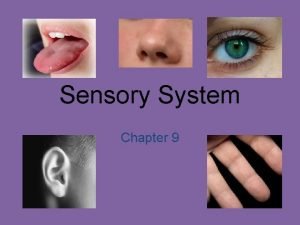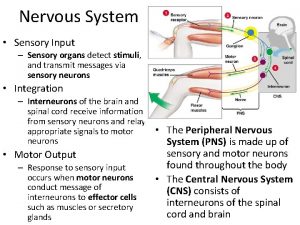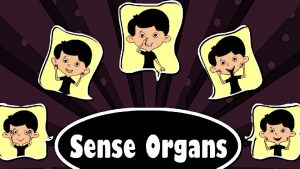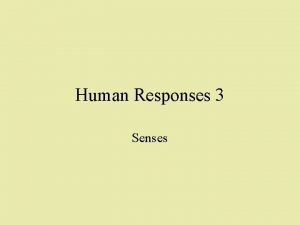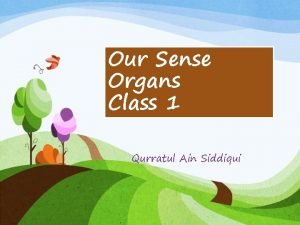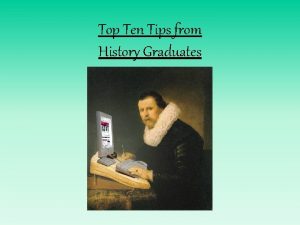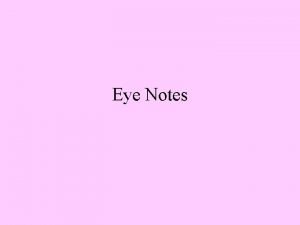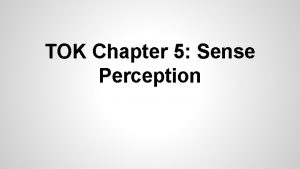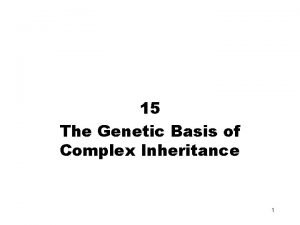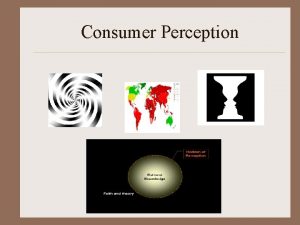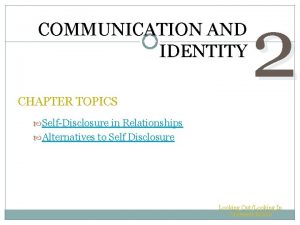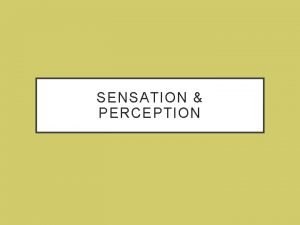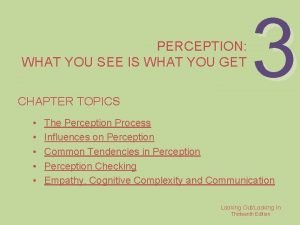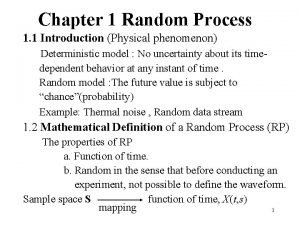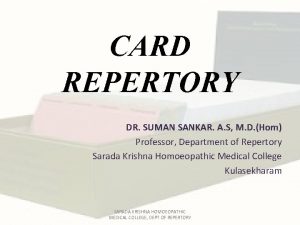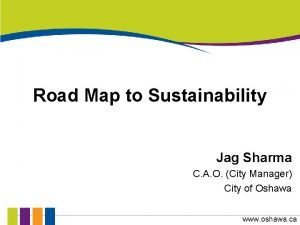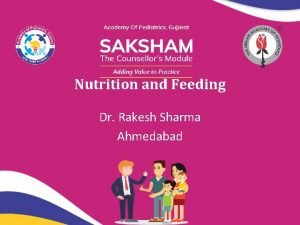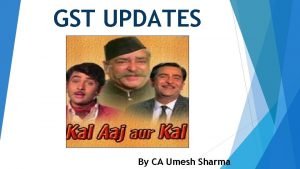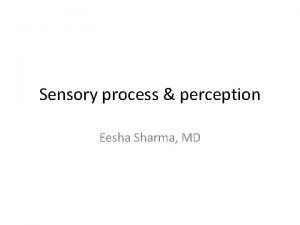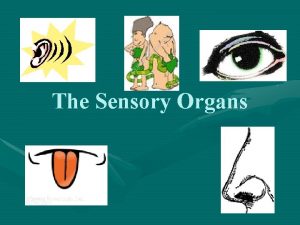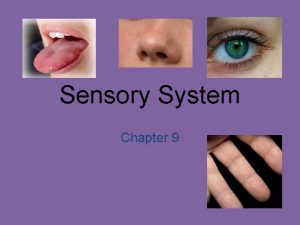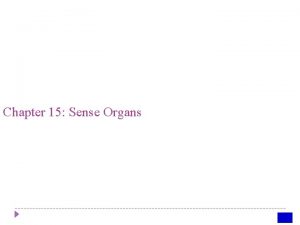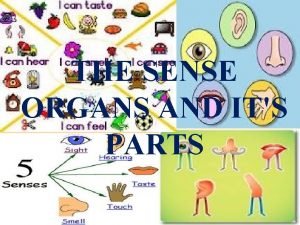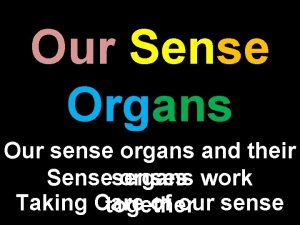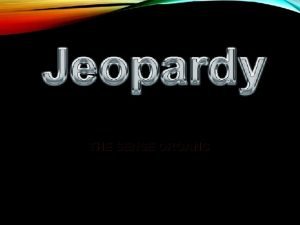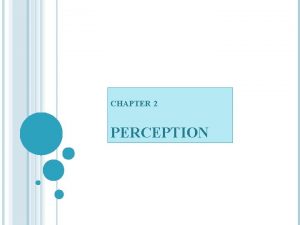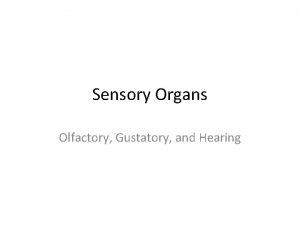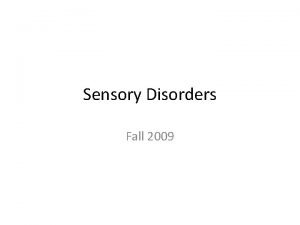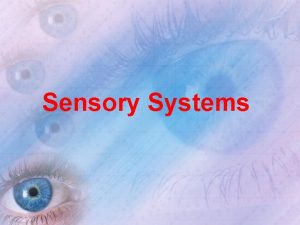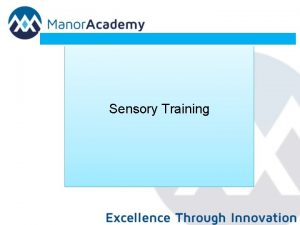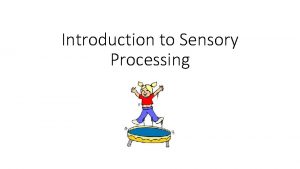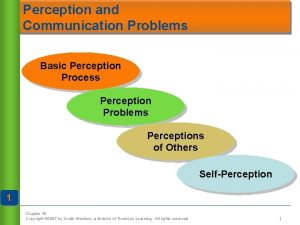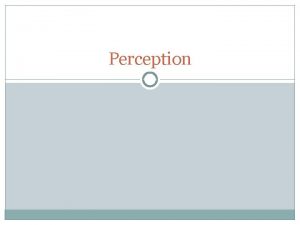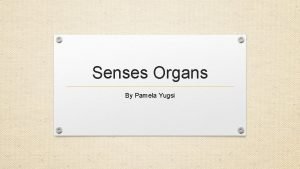Sensory process perception Eesha Sharma MD Sense organs





























- Slides: 29

Sensory process & perception Eesha Sharma, MD

Sense organs


Receptor potential Generator potential

Psychophysics • Gustav Theodor Fechner, 1860 • Quantitative relationship between physical stimuli and the sensations and perceptions they effect – Subject’s experience or behavior • Objectively measurable stimuli – Absolute thresholds – Discrimination thresholds – Scaling

Perception Sensation Apperception Experience






Perceptual processes • • Attention Form perception Visual depth perception Constancy Movement perception Plasticity Individual differences

Attention • The perceptual process that selects certain inputs for inclusion in our conscious experience, or awareness, at any given time

Filtering Serial processing Parallel processing Processing capacity

Form perception • Recognition of a figure on a ground

Contours

Organization • Gestalt: The whole is more than the sum of its parts • Laws of perceptual organization – Proximity – Similarity – Symmetry or good figure – Continuation – Closure



Visual depth perception • Monocular cues – Linear perspective – Clearness – Interposition – Shadows – Gradients of texture – Movement • Binocular cues – Retinal disparity


Constancy • Size constancy – Results when the object and its background change together in such a way that the relationship between them stays the same – Moon in the night sky • Brightness constancy – Result of unchanged brightness ratios


Movement perception • Real motion perception – Constancy: because of unchanged relationship between object and its background – The brain comparator • Apparent motion – Stroboscopic motion – Autokinetic effect – Induced movement

Plasticity • Visual deprivation – Sensitive period – Nature and nurture

Individual differences • Perceptual learning – An increase in the ability to extract information from the environment as a result of experience or practice with the stimulation coming from it – Ornithologists; Blind people • Set – Readiness or priming for certain kinds of sensory input • Motives and needs – Rorschach inkblots • Perceptual-cognitive style – Flexibility – Field dependence



 Sensory system organs
Sensory system organs Organs of the sensory system
Organs of the sensory system Sense organs
Sense organs Images of sense organs with names
Images of sense organs with names Sense organs for class 1
Sense organs for class 1 Amphibian sense organs
Amphibian sense organs Ten sense organs
Ten sense organs Take care of sense organs
Take care of sense organs Sense perception tok
Sense perception tok Narrow sense heritability vs broad sense heritability
Narrow sense heritability vs broad sense heritability Narrow sense heritability vs broad sense heritability
Narrow sense heritability vs broad sense heritability What affects perception
What affects perception Perception checking process
Perception checking process Process of perception
Process of perception Consumer perception process
Consumer perception process Perception checking process
Perception checking process Proximal vs distal
Proximal vs distal Define perception checking
Define perception checking The perception process
The perception process Thermal noise is a wide sense stationary process.
Thermal noise is a wide sense stationary process. Pediatric nursing rimple sharma pdf free download
Pediatric nursing rimple sharma pdf free download Dr pushpa raj sharma pediatrician
Dr pushpa raj sharma pediatrician Sharma card repertory pdf
Sharma card repertory pdf Dr pushpa raj sharma pediatrician
Dr pushpa raj sharma pediatrician Articulato
Articulato Jag sharma
Jag sharma Pushpa raj sharma
Pushpa raj sharma Dr rakesh sharma
Dr rakesh sharma Dr pushpa raj sharma clinic
Dr pushpa raj sharma clinic Ca umesh sharma
Ca umesh sharma
